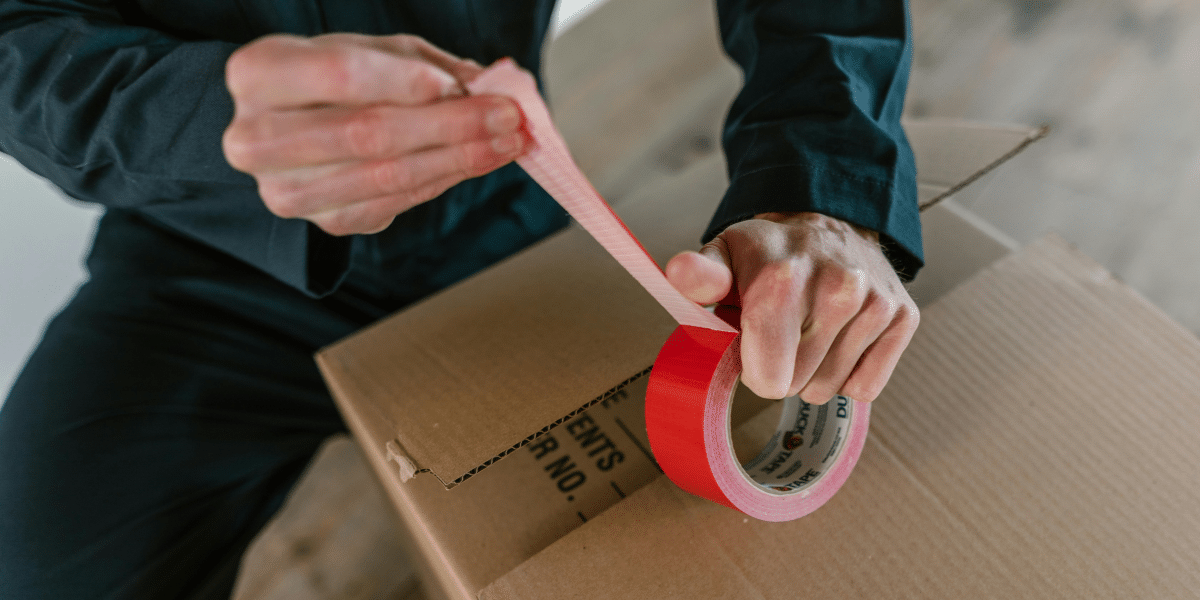Using carton sealing tape effectively is essential for ensuring secure packaging, protecting contents during transit, and maintaining a professional appearance. Poorly applied tape can lead to box openings, damage to products, and even tampering concerns. Here are five tips to help you achieve the best results when applying carton sealing tape:
1. Choose the Right Tape for the Job
Not all carton sealing tapes are created equal. Selecting the right tape for your packaging needs ensures better adherence and durability. Consider these factors:
- Tape Thickness and Adhesive: Lightweight boxes typically require thinner tapes, while heavier packages benefit from thicker, more robust tapes. Also, choose tapes with high-quality adhesive for strong bonding.
- Type of Tape: Acrylic, hot melt, and water-activated tapes each have unique benefits. Acrylic tape is good for general use, hot melt provides excellent bonding for heavier items, and water-activated tape offers tamper-evident seals.
Tip: Always check the compatibility of the tape with your box material, especially for corrugated boxes.
2. Use the Right Taping Pattern
The taping pattern you use can make a significant difference in box security. There are three common patterns:
- Single Strip: Ideal for lightweight boxes, a single strip down the middle of the seam is often sufficient.
- Double Strip (H-taping): For heavier boxes, apply one strip along the main seam and additional strips along the edges, forming an “H” pattern. This pattern is more secure and helps reinforce the box.
- Cross Taping: For extra reinforcement, especially in large, heavy boxes, apply tape horizontally and vertically, forming a cross. This method adds extra support.
Tip: Make sure the tape fully covers the box’s seam, extending slightly over the edges to prevent peeling.
3. Prepare the Box Surface
A clean, dust-free box surface is crucial for ensuring the tape sticks well. Any contaminants can reduce adhesion and cause the tape to peel off. Wipe down the box if it has been in a dusty or oily environment.
Tip: Avoid using tape on surfaces exposed to extreme temperatures. In colder environments, certain adhesives can lose their tackiness. Consider temperature-resistant tape if shipping in variable climates.
4. Apply the Tape with Consistent Pressure
Applying the right amount of pressure is essential to activate the adhesive and ensure a secure bond. Inconsistent pressure can lead to air bubbles, loose edges, and an unprofessional appearance. To achieve this:
- Use a Tape Dispenser: Tape dispensers not only save time but also ensure consistent pressure along the entire length of the tape. Handheld dispensers work well for small-scale applications, while automatic tape dispensers are more efficient for high-volume packaging.
- Manual Application: If applying by hand, press down firmly along the entire strip and smooth it out to avoid air bubbles or wrinkles.
Tip: For extra strength, go over the applied tape with a small roller or your hand to further press it down.
5. Store Tape Properly to Maintain Adhesive Quality
Proper storage is often overlooked but crucial for tape performance. Tape exposed to moisture, dust, or extreme temperatures can lose its effectiveness. Store your tape rolls:
- In a Cool, Dry Place: Excessive heat can cause the adhesive to weaken, and humidity can degrade the adhesive quality.
- Horizontally: This helps avoid warping and keeps the adhesive distributed evenly.
Tip: Rotate stock to use older tape first, as adhesive strength can diminish over time. Check the manufacturer’s recommendations for shelf life.
Conclusion
Applying carton sealing tape effectively can make a big difference in protecting your packages. By choosing the right tape, using effective taping patterns, and maintaining proper application techniques, you can enhance your packaging security and create a professional look. Use these tips as a guide for consistent, secure, and efficient taping practices, giving your business a reliable packaging process and minimizing risks associated with improper sealing.
Published By: Aize Perez

















